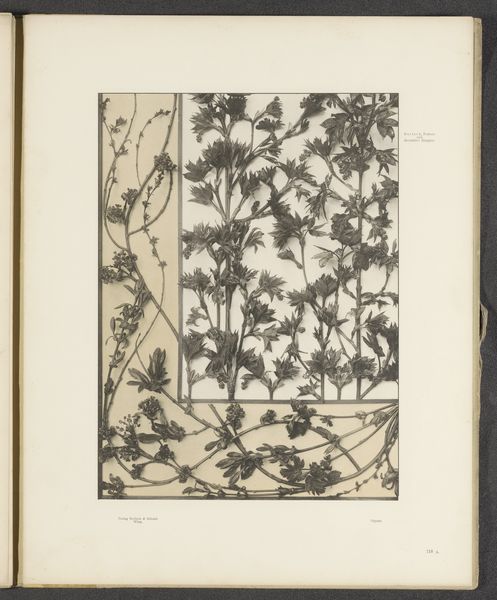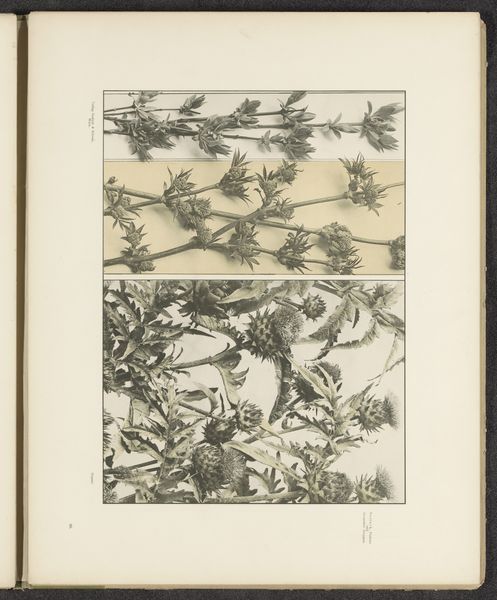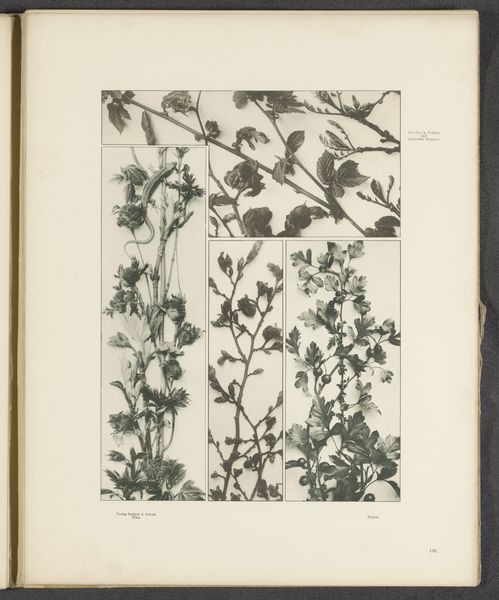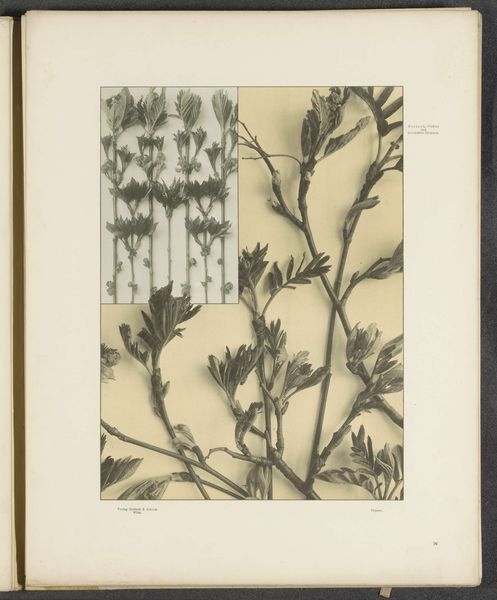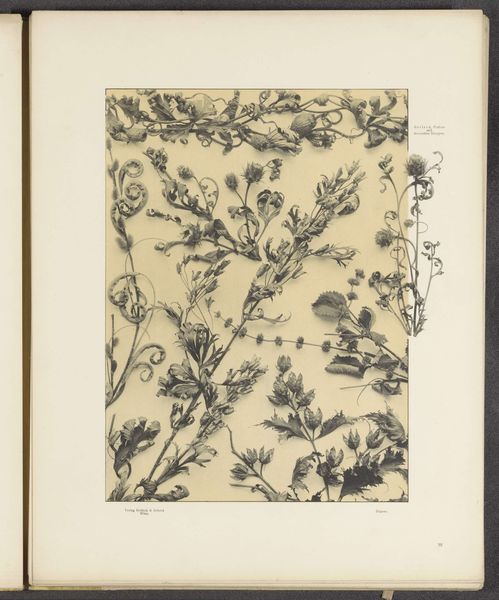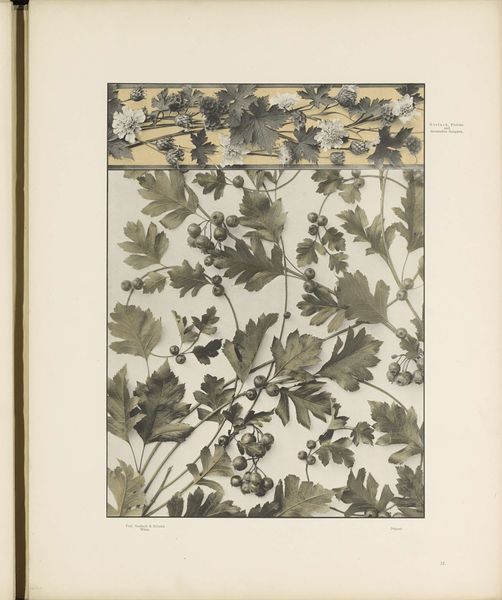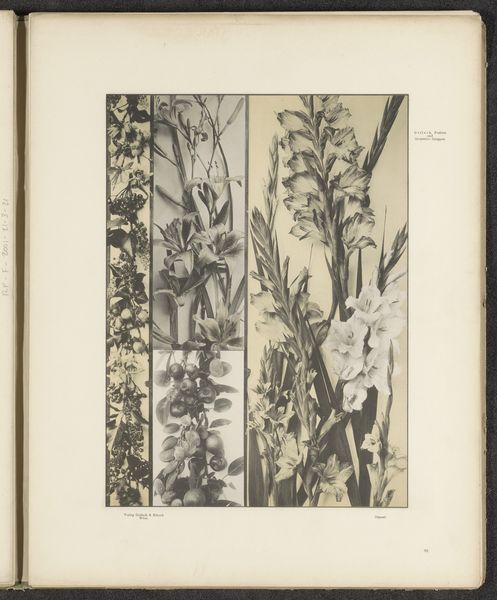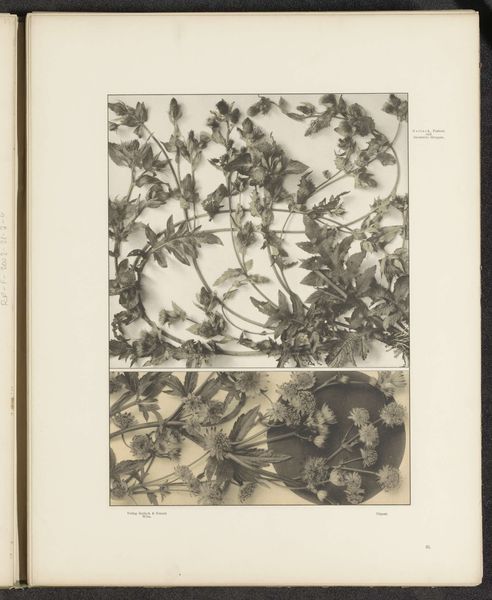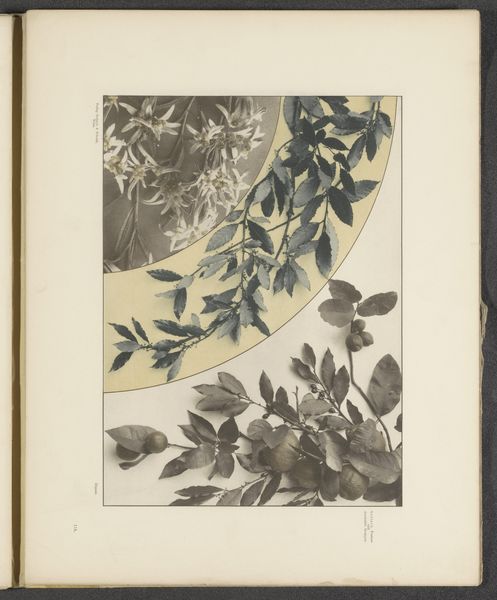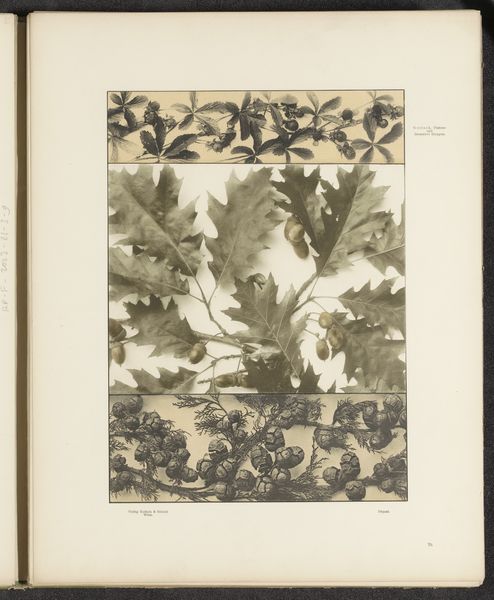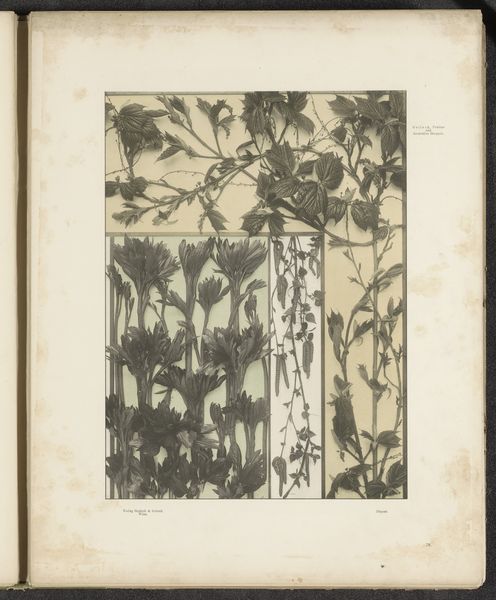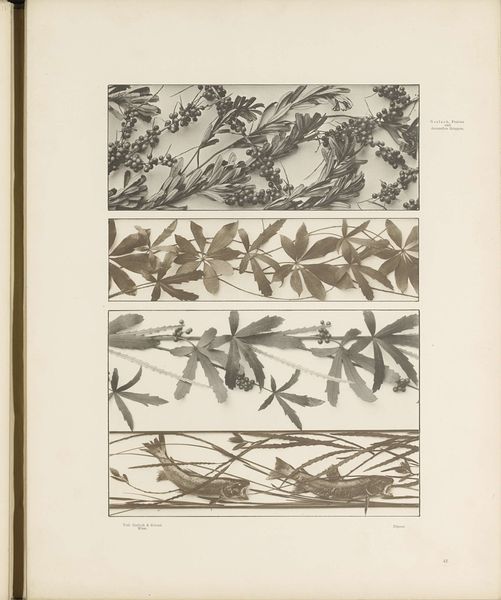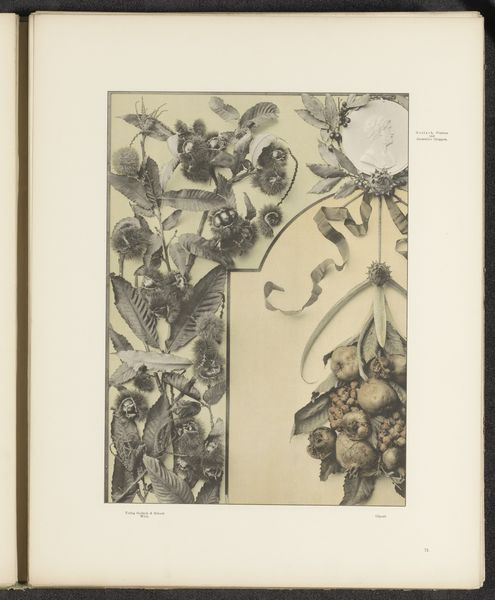
drawing, print, ink
#
drawing
#
ink painting
# print
#
ink
#
watercolor
#
realism
Dimensions: height 293 mm, width 214 mm
Copyright: Rijks Museum: Open Domain
Editor: This is "Vlakken met eikenscheuten, plataanscheuten en aalbesscheuten," which translates to "Panels with oak shoots, plane shoots, and currant shoots," dating from before 1897. It seems to be a print with ink, showcasing various plant cuttings. It's all very ordered and... scientific-looking. What strikes you when you see this piece? Curator: I immediately think about the historical context of botanical illustration. In the late 19th century, there was a surge in scientific exploration and documentation. These weren't just pretty pictures; they served a crucial purpose in cataloging the natural world. Editor: So, this print functioned almost like a visual encyclopedia entry? Curator: Precisely. Consider the socio-political implications. European powers were expanding their reach globally. Scientific documentation, including botanical prints like this one, played a role in asserting control and understanding of colonized lands and resources. It's a way of classifying and organizing knowledge, aligning nature within a European framework. Notice the carefully organized composition. Each plant is isolated, studied, almost dissected visually. Editor: Yes, I see how the isolated presentation makes it seem more clinical, more about observation than aesthetics. Does the medium – the print – also add to this feeling of scientific objectivity? Curator: Absolutely. Printmaking allowed for mass reproduction, disseminating knowledge widely, and further standardizing the visual representation of these plants. Who had access to these prints? Were they meant for educational institutions, private collections, or government agencies involved in resource management? These questions all shed light on the intended audience and purpose. Editor: That's fascinating. I never considered the political dimensions of what seemed like a straightforward botanical study. It definitely gives me a new perspective on how knowledge is produced and distributed through art. Curator: And hopefully it'll help you to think more about art as a form of rhetoric and a means to propagate ideas, as well as observe and admire.
Comments
No comments
Be the first to comment and join the conversation on the ultimate creative platform.
